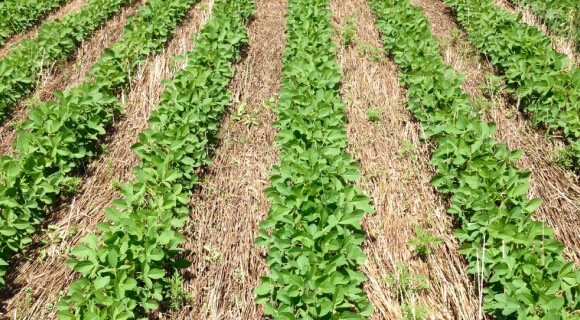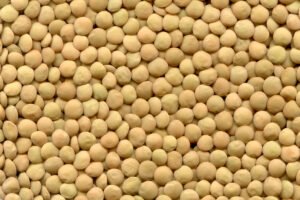No Till Farming
Want to restore the Soil Fertility, then stop Tilling.
Soil fertility is lost due to many industrial agricultural practices including deforestation, burning and excessive use of synthetic fertilizers and toxic chemicals, but the biggest contributor to soil degradation is the practice of soil tilling.
The initial stage of conventional farming starts with plowing the field but it has been proven with time that agriculture can be successfully practiced without tilling the farm. Tilling is an important process of conventional agriculture in which the soil is first stirred, dug and overturned to prepare it for cultivation of crops.
How to do Integrated Pest Management?

It works for the surface crop residues, animal manure and weeds, blending it deep into the soil, providing it air and warmth. It seems like a good thing, but doesn’t provide goodness in the long run. Here’s Why.
Tilling loosens the soil and removes the plant matter covering the soil. Due to this bareness, the soil gets dried up and the nutrients and organic matter also depletes, inducing soil erosion due to the reduction of water infiltration in the soil. Tilling also kills the essential microorganisms, earthworms and soil aggregates that are responsible for effective yield. It also causes soil degradation.
These harmful effects can be reduced if the farmers adopt no tilling or zero tilling farming. This would improve the soil conditions for the better & effective yield.
We will learn more about ‘No Till Farming’ in this article.
No Till Farming
How to convert your your farm into organc farm?
No till farming is an agricultural practice in which zero or least soil is disturbed. The top layer of the soil is turned over to a depth of several inches or more before seeding during this tilling procedure, which is done to aerate the soil, incorporate manure & fertilizers, to destroy pests, to eradicate weeds and also for loosening the soil for future seeding. But this practice majorly contributes to soil erosion which removes the cover matter and causes an imbalance in micro communities.
So the question arises here that, If Tilling is not to be practiced, then What Fundamental approaches should be made?

Methods of Minimum or Absence of Tillage
The method of No Till requires special equipment like disc seeders or agriculture drills to make furrows in which the seeds should be planted immediately which is then gently pressed and covered. In this way, the soil would suffer less disturbance than digging it to that point where the seed is supposed to drop. It also allows the planters to spend less on fertilizers, applying them right into the furrows via designated tubes.
How to do Disease and Pest management in Organic Agriculture?
- Cover with Straw – Weeds cannot be destroyed mechanically and controlling weeds is a major concern in no till farming and to solve this, agriculturists cover inter-rows with straw, dry hay or mulches, which helps to suppress the weeds due to the lack of light and also accumulates moisture and protects the plant roots from the burning sun.
- Crop Rotation – It is an efficient agricultural technique which has numerous benefits and it helps in weed infestations and pest invasions because different crops have different pest and weed threats. It also solves soil erosion as alternative plants have different roots. If legumes are planted in the field, it will release Nitrogen which will help in increasing the fertility of soil as well.
Effects of No-Till on Soil
Some of the major effects of no tilling on soil are:
- Reduces Soil Erosion – Tilling breaks the earth’ surface by turning it over and this makes the cover layer move inside. This makes the soil bare on the top and due to the loosened structure it becomes subject to erosion. The soil gets eroded due to the heavy rains or winds, especially in the steep and slope areas. If Tilling practice is not performed, then this issue can be eliminated.

- Carbon Sequestration – Carbon is stored naturally in the soil in the form of organic material such as plant roots and microorganisms which rises to the soil surface when the soil is tilled. The Carbon provides temporary nutrients to the crops but when the soil carbon is exposed to the atmosphere, it reacts with oxygen and transforms into carbon dioxide contributing to Greenhouse gas emissions that warms the planet.
How to do weed management in Organic Agriculture?
- No till farming minimises the soil disturbance which helps in keeping the carbon in the soil, enriching soil biodiversity which also reduces the need for such chemical fertilizers that emit Greenhouse gases. Organic No till practices helps in increasing the organic carbon of the soil up to 9% after 2 years and 21% after 6 years, when it is combined with cover crops and organic management. It can also help in establishing the climate resilient farmers when the practice is combined with other methods such as cover cropping, Agroforestry & Crop rotations.
- Conserve Soil Fertility – Tilling of the soil disturbs the balance of Earth’s flora and fauna that impacts micro communities. Although, Tilling of the soil helps in controlling pests and their larva, it destroys beneficial species at the same time because certain soil microorganisms are capable of improving soil fertility but due to the tilling, those microorganisms get removed. Also, during crop rotation, legumes can be planted which are rich in Nitrogen, as it can contribute to soil fertility which will be useful to subsequent crops.
Benefits of No Till
The several benefits involved with the No tilling practice are:
- It saves the tillage equipment that is needed to plow the entire field. There are modern machines that allow direct sowing of the crops on the residue covered strips instead of digging the field and it also allows the plants to get nutrients from the decomposed matter in this way.
- It reduces the fossil fuel inputs for field operations.
- It shortens the operation time as the sophisticated farmers can do it faster.
- It avoids human labour, thereby maintaining tillage machines.
- No till farming practice slows down the evaporation and cracking of the soil surface, which helps in moisture conservation and decreases the use of water.
- It eliminates leakage of herbicides due to less frequent irrigation.
- It allows the soil structure to stay intact and protects the soil by leaving the crop residues on the surface itself.
- It enhances the ability of the soil to absorb and include infiltrate water which in turn decreases erosion and runoff.
How to do integrated farming system?
- It prevents pollution from entering water sources present in the vicinity.
- Due to slow evaporation, it leads to better absorption of rainwater and better efficiency of irrigation which leads to greater yields especially in hot and dry climates.
- Tilling causes the death or disturbances of microorganisms in the soil which are very critical for the soil health, so with No tilling practice, these organisms would establish their communities and feed off of the soil’s organic matter which is important for nutrient cycling and suppressing the plant diseases, and with the improve in the organic matter in the soil, the internal structure of the soil also improves, thus increasing the soils capacity to grow more nutrient dense crops.
- It decreases the labour, irrigation, fuel and machinery costs.
- It plays an essential role in sequestering Carbon and thus reducing the chances of Global warming.

Conventional v/s Organic No till Farming
No till farming is of two types:
- Conventional, and
- Organic
In Conventional No till farming, farmers use herbicides to manage the weeds before and after sowing the seeds, which is even higher than the amount of herbicides used in tillage based farming and this causes a great threat to environment and human health.
But, Organic No till farming uses a variety of methods to manage those weeds and it also reduces or eliminates the tillage without using chemical herbicides. Organic No till farming utilizes integrated weed management to solve the issue, using non chemical herbicides, cattle or poultry grazing, covering crops with mowing before settling the seeds, crop rotation, and tractor implements such as the roller crimper. This is used by the farmers to lay down a weed suppressing mat that can be planted through in one pass. These methods contribute to environment protection, nature regeneration and human health.
How technology chabging methods of Agriculture?
Farmers often get confused between the two No till practices and it is their common misconception that no till farming can only be practiced when they are growing genetically modified crops that require the use of herbicides, but they need to understand the difference between the two types of no till farming.
The only thing is to select a more stronger and resilient species rather than genetically modifying them. Organic farming does not comply with this and it does not even approve No till farming either. The soil crisis can not be resolved through organic farming but it can help us move towards a regenerative agriculture model which can be more good for human health and the environment too.
Crop Monitoring in No Till Farming
Crop Monitoring is an online tool that monitors the crop rotation decisions and helps in the implementation of no till farming. This technique allows comprehensive monitoring and analysis of vegetation states in real-time and they can opt for the most appropriate crop for a particular field and the climatic needs of each plant.

It also determines the crop growth stages and measures the soil moisture on the surface and the root zones too. It distinguishes between the bare zones and the areas which are covered with vegetation so as to prevent erosion and it also provides weather forecasts and elaborates vegetation index charts. It also manages the use of effective herbicides or fertilizers.
The farmers in no till farming are forced to use more herbicides due to rapid growth of weeds on uncultivated lands, so crop monitoring helps in tackling this issue with its zone feature that comprises the productivity and vegetation maps and checks the vegetation density and determines the health of the plants. This feature helps the farmers to use the herbicides or fertilizers on problem zones solely instead of fertilizing the entire field.
Farming guide for Elephant Food Yam for beginners.
Future of No Till Farming
The benefits of No-Till are far greater than the tillage based farming. Tilling was used because it enabled the farmers to grow more plants, faster, but modern no-till tractors allow the farmers to sow the seeds even faster and cheaper.
Conventional tillage practices requires the farmers to make several passes over the field, first tilling the soil and then returning to the plant seeds, but no tilling farming practice removes this step and save the farmers time and money, and according to a report, it decreases the fuel expenses by 50 to 80% and labor by 30 to 50%.
It is a promising concept in terms of money spent versus money gained and apart from its sole merit, it is beneficial to the environment, eliminating the negative impact of farming activities on the environment, climate and the overall health of the earth. These key advantages are supposed to get even more encouraged by adopting more further methods in the future.




